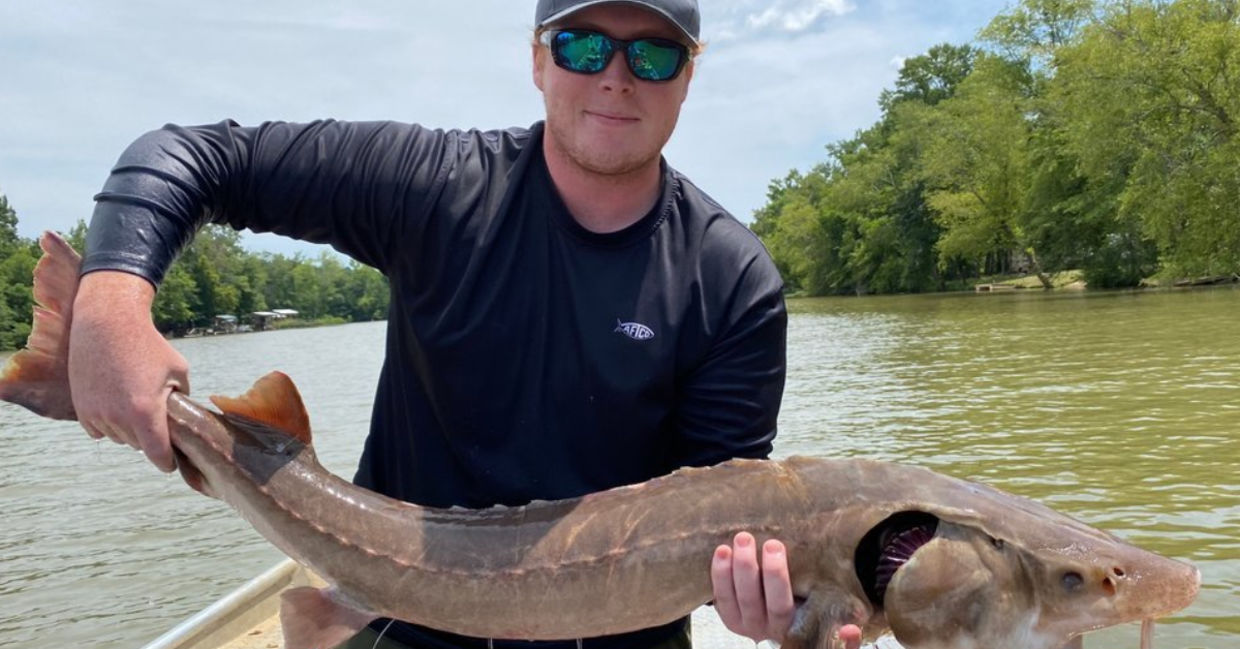
(Photo by Matthew Phillips/University of Georgia)
Georgia’s lake sturgeon are making a surprise comeback! After surviving for more than 136 million years, they disappeared in the 1970s, according to CBS News. Thanks to the dedication of scientists and state protections, they are now returning with a splash.
Lake sturgeon look prehistoric with their spade noses and vacuum hose. They are traditionally found in 18 states as well as five provinces in Canada, but due to polluted water and over harvesting for caviar, their numbers have been reduced. And with river dams prohibiting them from migrating to spawning sites, their numbers continued to decline.In Georgia’s Coosa River, they totally disappeared.
Rehabilitation success
The good news is that in the summer of 2022, students and scientists discovered lake sturgeon in the Coosa River that are reproducing. This is all thanks to imposed fishing limits, state environmental protection, and stocking programs.
Back in 2002, the Georgia Department of Natural Resources reintroduced sturgeon into this river, according to a Warnell School of Forestry & Natural Resources press release. They obtained sturgeon eggs from Wisconsin where they have similar sturgeon, incubated and hatched them, then released them into the Coosa.
As it takes 20 years for female lake sturgeon to reach reproductive age, researchers had to patiently wait, releasing more hatched fish into the river each year. The rehabilitation program is also challenging as female lake sturgeon reproduce once every two to three years.
This summer, students found three females with black eggs ready for fertilization. “This was the first time anybody has found a sexually mature female since the reintroduction program began, and it’s exciting because it’s confirmation that they are becoming mature and trying to spawn,” Marty Hamel, associate professor from the University of Georgia Warnell School of Forestry and Natural Resources, said in the press release.
The objective is to annually release 15,000 fingerling sturgeon that are four to seven inches long, biologist John Damer told the Rome News-Tribune. The sturgeon that were released in 2002 are now about 4-feet long. When they were more prevalent in the river, they would weigh in at 40 pounds.
Tagging and tracking
Meanwhile, the Warnell team is busy tagging the fish with telemetry tags so they can track them in the river, according to the press release. They are carefully studying their movements and their preferred locations in the river system.
The discovery of spawning fish this past summer was encouraging for all. “So, it’s an exciting time from that standpoint,” Hamel said. “We’re on the cusp of figuring out these really important aspects to see if the population will be sustainable and ultimately gauge the success of the reintroduction program.”
Although these large fish may be tempting for anglers, more than 70 percent of Georgians are supportive of rehabilitation programs. When anglers find a sturgeon, they are encouraged to report it and throw the fish back into the river. Last year, the office received double the amount of reports, another sign that the sturgeon are back.
Thanks to the work of dedicated scientists, cleaner waters, and a united local population, these prehistoric fish are back in their natural habitat and once again swimming upstream.
YOU MIGHT ALSO LIKE:
Sockeye Salmon Back in Canadian Lake for First Time in Fifty Years!
This Year’s Reprieve for Iceland’s Whales May Last Forever!
This Sloth School Helps Babies Live in the Wild







